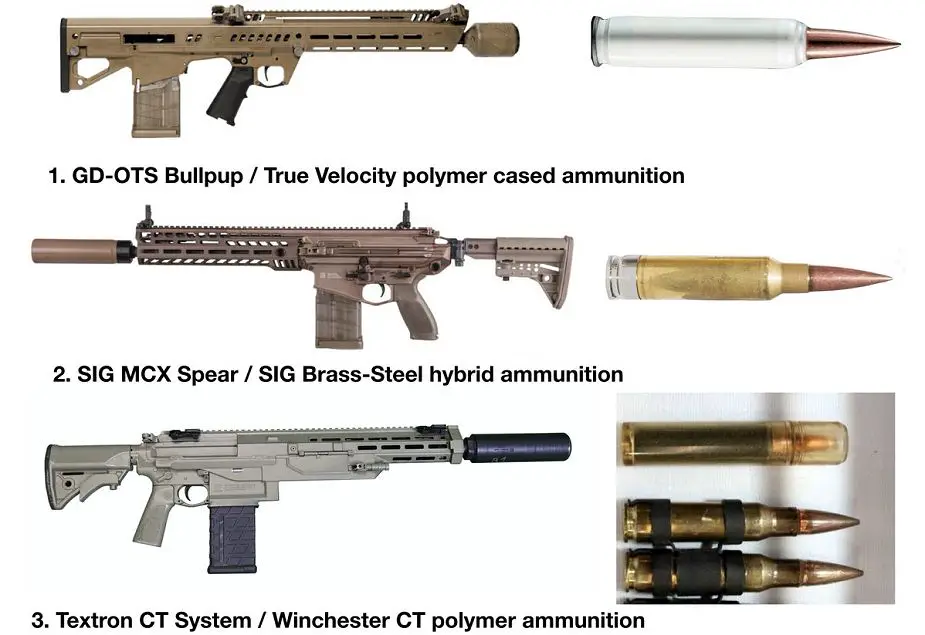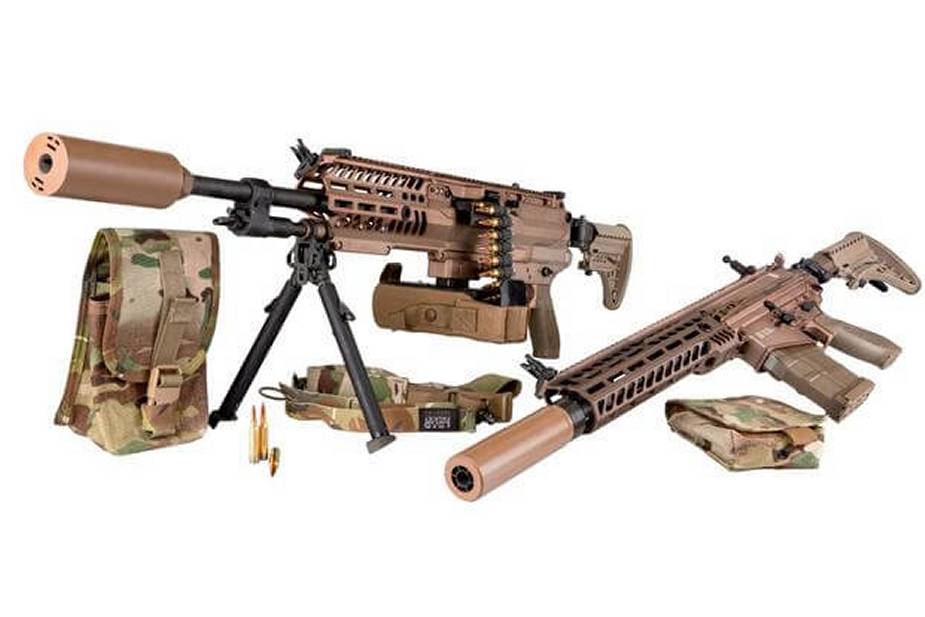According to ssusa.org, Winchester has announced that the U.S. Army awarded the company cost-plus and firm-fixed-price contracts totaling $20 million for the 6.8 mm Next Generation Squad Weapons (NGSW) program. The contracts specify ammunition development, manufacturing facility requirements analysis and production capacity planning.
Follow Army Recognition on Google News at this link

For U.S. Army's NGSW-R program, different ammunition have been evaluated: MG6.8 & MCX SPEAR from SIG Sauer, RM277 from General Dynamics, and NGSWR-R from AAI/Textron Systems. Winchester has been awarded contracts that specify ammunition development, manufacturing facility requirements analysis, and production capacity planning (Picture source Twitter account of Nicholas Drummond)
Work will be performed at the Lake City Army Ammunition Plant in Independence, Mo., which is the only government-owned, contractor-operated small-caliber ammunition production facility in the United States. These projects were awarded under Winchester’s $8 billion contract to operate the Lake City facility. Winchester Ammunition took over the operation at Lake City in late 2020.
The Next Generation Squad Weapon (NGSW) program has been created with the goal to replace the M4 Carbine, M249 SAW, and M240 machine gun as well as the 5.56x45 and 7.62x51 rounds. Two arms manufacturers, True Velocity (earlier LoneStar Future Weapons, General Dynamics) and Sig Sauer, Inc., are taking part in the program. Other defense companies (Textron Systems, FN-America, and PCP Tactical) were removed from the program between September 2019 and November 2021. The program is expected to cost $10 million dollars in the first year, and $150 million in the next one.
The NGSW program began in 2017 after U.S. Congress began testing the M4 and the 5.56×45mm NATO round for modern-day effectiveness. They concluded that the M4 Carbine was still favored by troops, and also performed well under stress. Problems such as feeding issues were fixed by using different ammunition types and magazines. Despite this, the M4 still had difficulty penetrating the types of bulletproof vests used by Russian and Chinese troops, especially at longer ranges. The program also took into account the US military's experiences in the Middle East, where guerrillas had used weapons such as the AKM with larger rounds and higher effective distances. As such, Congress began looking for replacements for the M4.
The U.S. Army gave out a series of requirements for prototype NGSW weapons.
* Ability to fire 6.8mm rounds
* A maximum length of 35 in. (890 mm)
* A maximum mass of 12 lbs (5.4 kg) including attachments)
* Ability to suppress targets from 3,900 ft (1,200 m), and ability to accurately fire on targets 2,000 ft (610 m) away.
* Able to utilize Small Arms fire-control systems. The program indeed includes the development of new fire control systems, able to be utilized on small arms weapons of the NGSW program. Two companies have entered the competition: Vortex Optics and L3Harris Technologies.

SIG Sauer Next Generation Squad Weapons (NGSW) systems proposed to the U.S. Army, consisting of the revolutionary 6.8x51 hybrid ammunition, the NGSW-AR lightweight belt-fed machine gun, the NGSW-R rifle, and suppressors (Picture source: SIG Sauer)















